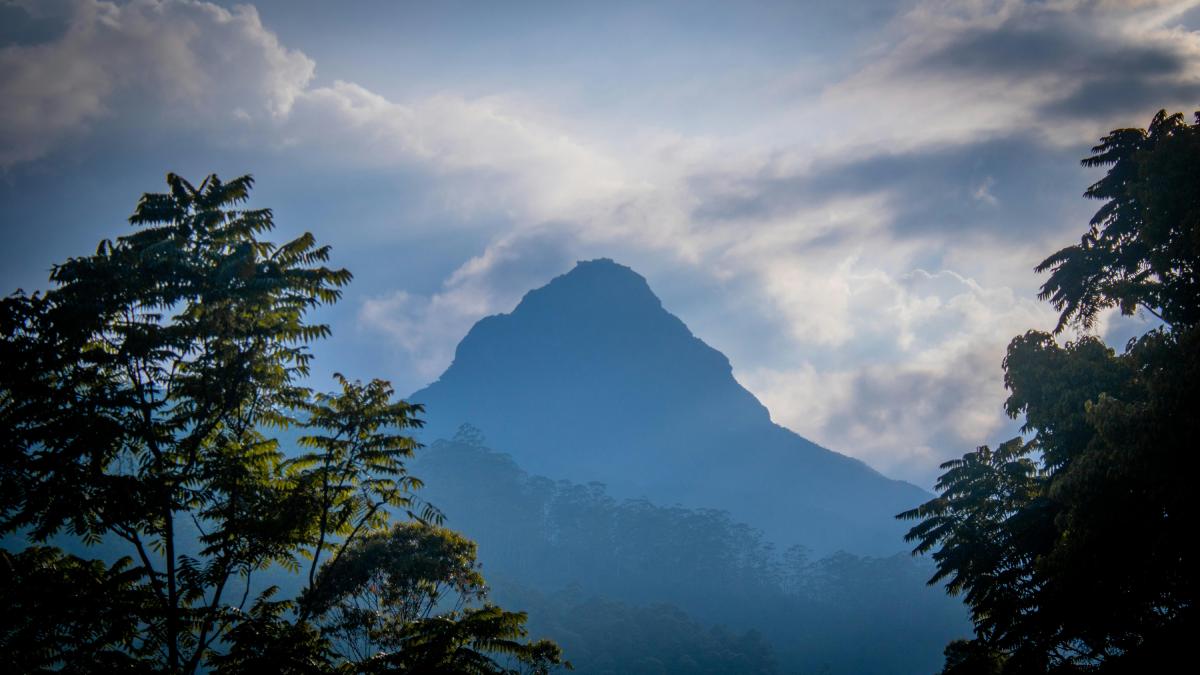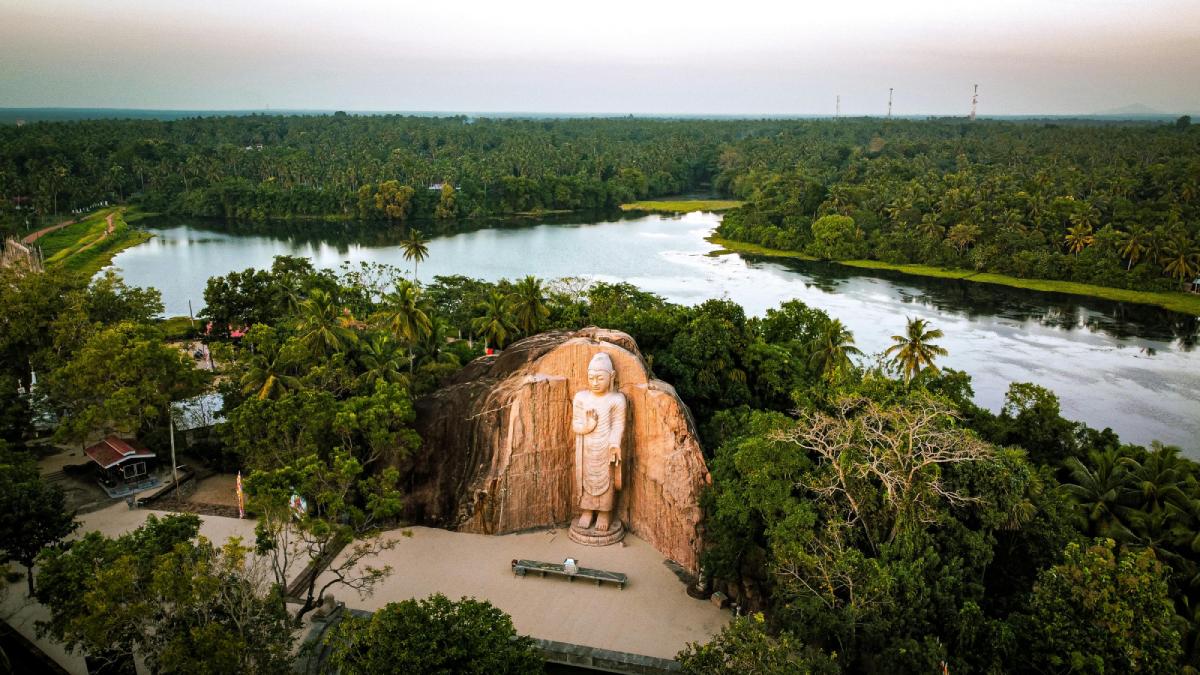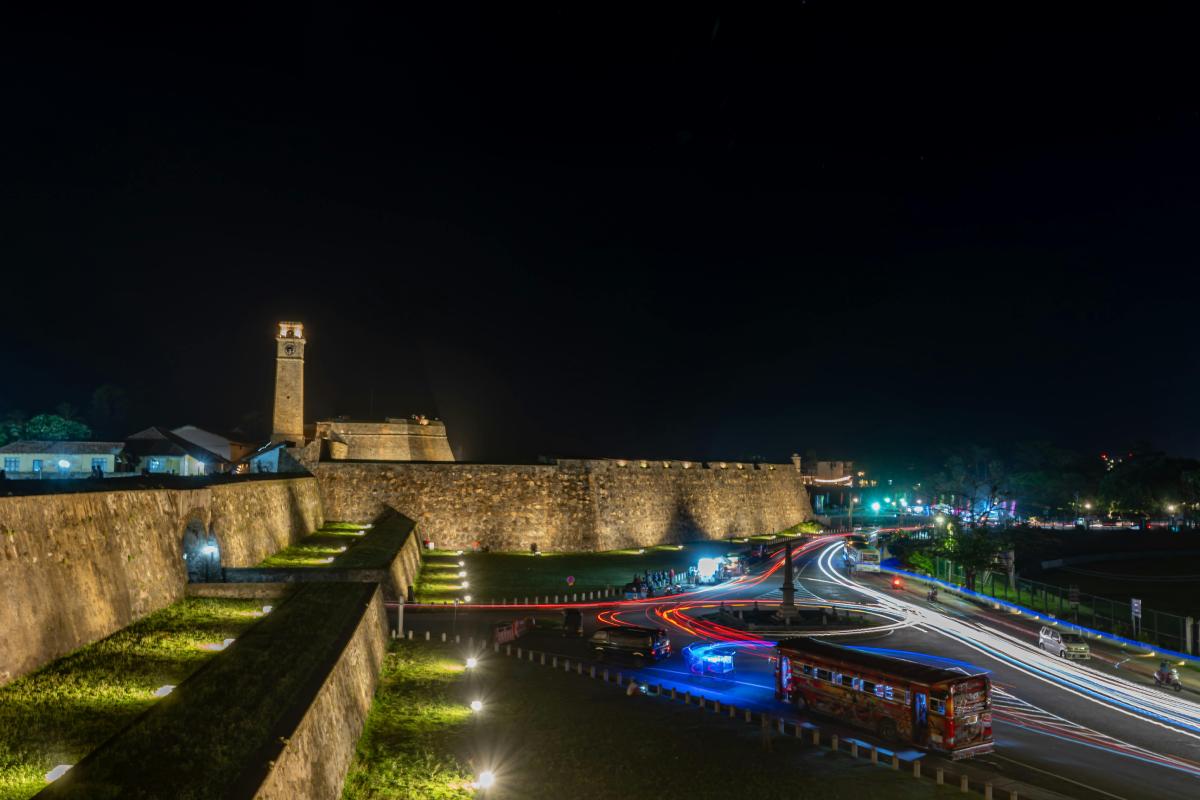Sri Lanka, the teardrop-shaped island in the Indian Ocean, is a paradise for nature enthusiasts and hiking aficionados alike. Beyond its pristine beaches and ancient cultural sites lies a verdant interior waiting to be explored on foot. From misty mountains and rolling tea plantations to dense rainforests and wildlife sanctuaries, Sri Lanka offers diverse hiking experiences for all levels of adventurers. This guide takes you through some of the best hiking trails on the island, providing essential information for planning your next trekking adventure in this tropical paradise.Sri Lanka Best Hiking Trails for Nature Lovers.
Adam’s Peak (Sri Pada) – Sri Lanka Best Hiking Trails for Nature Lovers

Overview
Rising majestically to 2,243 meters (7,359 feet), Adam’s Peak is perhaps Sri Lanka’s most sacred mountain. Known locally as Sri Pada (“Sacred Footprint”), it bears religious significance to Buddhists, Hindus, Muslims, and Christians alike. The mountain features a footprint-shaped indentation at its summit that various religions attribute to Adam, Buddha, Shiva, or St. Thomas.
The Experience
The traditional pilgrimage route begins at Dalhousie village, with most hikers starting their ascent in the middle of the night to reach the summit for sunrise. The trail consists of approximately 5,500 steps and takes about 3-4 hours to complete. During pilgrimage season (December to May), the path is illuminated and lined with tea stalls and rest stops.
The sunrise view from the summit is truly spectacular – on clear days, you can see the shadow of the peak perfectly cast across the landscape below, a phenomenon known as the “shadow of the peak.” The descent offers stunning daytime views of the surrounding hills and valleys that weren’t visible during the night climb.
Practical Information
- Difficulty: Moderate to challenging
- Best time to visit: December to May (pilgrimage season)
- Duration: 5-7 hours round trip
- Starting point: Dalhousie village
Horton Plains and World’s End
Overview
Horton Plains National Park sits on a high plateau at about 2,100 meters (6,900 feet) above sea level. The park is home to a variety of endemic flora and fauna, including sambar deer and purple-faced langurs. The crown jewel of Horton Plains is World’s End, a stunning escarpment with an almost sheer drop of about 880 meters (2,887 feet).
The Experience
The World’s End trail is a 9.5 km (6 mile) loop that takes you through cloud forests, grasslands, and past the picturesque Baker’s Falls. The hike to World’s End offers breathtaking panoramic views of the southern region of Sri Lanka, extending all the way to the coast on clear days. The dramatic drop-off creates an exhilarating perspective that makes you feel as though you’re standing at the edge of the world.
For the best experience, arrive early in the morning before the mist rolls in and obscures the views. By mid-morning, clouds typically form in the valleys, creating a mystical atmosphere but often blocking the long-distance views.
Practical Information
- Difficulty: Easy to moderate
- Best time to visit: January to March
- Duration: 3-4 hours
- Starting point: Horton Plains National Park entrance
Knuckles Mountain Range
Overview
Named for its resemblance to a clenched fist when viewed from certain angles, the Knuckles Mountain Range (Dumbara Hills) is a UNESCO World Heritage Site and biodiversity hotspot. The range consists of five main peaks, with the highest reaching 1,904 meters (6,246 feet). This region is less frequented by tourists compared to other hiking destinations, offering a more remote and pristine natural experience.
The Experience
The Knuckles Range offers various hiking trails of different lengths and difficulty levels. The “Mini World’s End” trail provides views similar to the famous World’s End but with fewer crowds. More challenging multi-day treks take you through diverse landscapes including cloud forests, cascading waterfalls, terraced paddy fields, and traditional villages.
The biodiversity is remarkable, with over 1,000 plant species, 247 vertebrate species, and 130 bird species. Hikers often encounter endemic species such as the purple-faced langur, spotted deer, and various endemic birds and butterflies.
Practical Information
- Difficulty: Varies from moderate to challenging
- Best time to visit: February to April or August to September
- Duration: Day hikes to 3-day treks available
- Starting point: Various, including Corbett’s Gap and Riverston
Ella Rock
Overview
Ella has transformed from a sleepy village into a popular tourist destination, largely due to its stunning natural beauty and accessible hiking trails. Ella Rock stands as the most challenging and rewarding hike in the area, offering panoramic views of Ella Gap and the surrounding tea plantations.
The Experience
The hike begins in Ella town and follows the railway tracks for about 1.5 km before veering off into tea plantations and forests. While the trail can be confusing at times with several false paths, the journey itself is part of the adventure. You’ll traverse through diverse landscapes, from railway tracks to tea estates, eucalyptus forests, and grassy hills.
The summit rewards hikers with breathtaking 360-degree views of the surrounding mountains, valleys, and the distinctive Ella Gap. Many hikers choose to start early to catch the sunrise from the top, when the surrounding hills are bathed in golden light and the views are at their clearest.
Practical Information
- Difficulty: Moderate
- Best time to visit: January to March
- Duration: 4-5 hours round trip
- Starting point: Ella Railway Station
Little Adam’s Peak
Overview
Not to be confused with the more strenuous Adam’s Peak, Little Adam’s Peak is named for its resemblance to its more famous counterpart. At 1,141 meters (3,743 feet), it’s a significantly easier climb but still offers spectacular views of the Ella Gap and surrounding tea plantations.
The Experience
The trail begins near the Ella Flower Garden Resort and initially follows a paved path through tea plantations. You’ll often see tea pluckers at work among the bushes, offering fascinating glimpses into the local tea industry. The path gradually ascends through terraced tea fields before reaching a series of steps that lead to the first summit.
The hike features three distinct peaks, each offering slightly different perspectives of the dramatic landscape. The panoramic views encompass Ella Rock, Ravana Falls, and the valley below. The relatively easy climb makes this an excellent choice for families or those looking for a less strenuous hiking experience.
Practical Information
- Difficulty: Easy
- Best time to visit: Year-round, but best during dry season (December to March)
- Duration: 2-3 hours round trip
- Starting point: Ella Flower Garden Resort
Pidurangala Rock
Overview
Located adjacent to the more famous Sigiriya Rock Fortress, Pidurangala Rock offers an equally impressive adventure with fewer crowds and a lower entrance fee. The rock shelters an ancient forest monastery and provides what many consider to be the best view of Sigiriya Rock.
The Experience
The climb begins at the Pidurangala Royal Cave Temple, where you’ll need to cover your shoulders and knees as a sign of respect. After exploring the temple with its reclining Buddha statue, the trail leads through forest paths before opening up to a challenging scramble over large boulders near the summit.
The effort is well rewarded once you reach the top. The panoramic views include the majestic Sigiriya Rock to the south, with the surrounding countryside stretching in all directions. Sunset hikes are particularly popular, as the golden hour light transforms Sigiriya and the landscape into a photographer’s dream.
Practical Information
- Difficulty: Moderate
- Best time to visit: Year-round, but early morning or late afternoon recommended
- Duration: 1-2 hours round trip
- Starting point: Pidurangala Royal Cave Temple
Sinharaja Forest Reserve
Overview
As Sri Lanka’s last viable area of primary tropical rainforest, Sinharaja is a UNESCO World Heritage Site and biodiversity hotspot. The name translates to “Lion Kingdom,” and while you won’t find lions here today, you will discover an extraordinary ecosystem with countless endemic species.
The Experience
Several trails wind through this dense rainforest, ranging from easy walks to challenging day-long treks. Most visitors opt for guided hikes, as the expertise of local guides proves invaluable for spotting wildlife and understanding the complex ecology of the forest.
The hiking experience here differs dramatically from the mountain trails, with the dense canopy creating a mysterious, primeval atmosphere. The air is thick with humidity and alive with the sounds of insects, birds, and animals. While wildlife viewing requires patience and keen observation, potential sightings include purple-faced langurs, giant squirrels, and many of Sri Lanka’s endemic bird species that move in mixed feeding flocks through the forest.
Practical Information
- Difficulty: Easy to moderate
- Best time to visit: January to March and August to September
- Duration: Various options from 2-hour walks to full-day treks
- Starting point: Kudawa or Deniyaya entrance
Kirigalpotta
Overview
As Sri Lanka’s second-highest mountain at 2,395 meters (7,858 feet), Kirigalpotta offers a challenging hike for experienced trekkers. Located in the Horton Plains National Park, this peak is less visited than neighboring World’s End, providing a more secluded wilderness experience.
The Experience
The trail to Kirigalpotta begins at the same entrance as the World’s End track but quickly diverges into wilder territory. The path winds through patches of cloud forest and open grasslands, becoming progressively more rugged as you ascend. Navigation can be challenging in places, with marker posts sometimes difficult to spot in the mist.
The summit offers spectacular views that extend even beyond those at World’s End, with visibility stretching to the coast on exceptionally clear days. The sense of achievement upon reaching the top is profound, especially given the relative solitude compared to Sri Lanka’s more popular hiking destinations.
Practical Information
- Difficulty: Challenging
- Best time to visit: January to March
- Duration: 6-7 hours round trip
- Starting point: Horton Plains National Park entrance
Preparing for Your Hike in Sri Lanka
Best Seasons for Hiking
Sri Lanka experiences two monsoon seasons affecting different parts of the island at different times:
- Southwest monsoon (May to September): Affects the southwest coast and central highlands
- Northeast monsoon (October to January): Affects the northeast coast
The best overall hiking period is from January to March when most of the island experiences dry weather. For specific regions, consider:
- Central Highlands (Adam’s Peak, Horton Plains): December to March
- Cultural Triangle (Pidurangala): Year-round but avoid extreme heat from April to June
- Rainforests (Sinharaja): January to March and August to September
Essential Packing List
- Footwear: Sturdy hiking shoes with good grip
- Clothing: Lightweight, quick-dry clothing; long pants for leech protection in rainforests
- Rain protection: Waterproof jacket or poncho (regardless of season)
- Sun protection: Hat, sunglasses, and high-SPF sunscreen
- Hydration: At least 1-2 liters of water per person (more for longer hikes)
- First aid kit: Including antiseptic, band-aids, pain relievers, and leech repellent
- Navigation: Maps or offline GPS apps (cell service can be unreliable)
- Documentation: National park permits where required
Responsible Hiking
- Respect local customs: Cover shoulders and knees when visiting religious sites
- Leave no trace: Carry all trash out with you
- Stay on marked trails: To protect sensitive ecosystems and prevent erosion
- Support local communities: Hire local guides when appropriate
- Wildlife ethics: Observe animals from a distance and never feed them
Conclusion
Sri Lanka’s diverse landscapes offer hiking experiences for every preference and ability level, from short scenic walks to challenging multi-day treks. Whether you’re seeking spiritual experiences at Adam’s Peak, biodiversity in Sinharaja, or panoramic views from Ella Rock, the island’s trails provide intimate connections with nature rarely found elsewhere.
Beyond the physical challenge and natural beauty, hiking in Sri Lanka offers opportunities to engage with local communities, experience the island’s rich cultural heritage, and create memories that last a lifetime. As tourism continues to develop, responsible hiking practices become increasingly important to preserve these natural treasures for future generations.
So lace up your hiking boots, fill your water bottle, and set out to discover the hidden gems of this island paradise. The mountains, forests, and valleys of Sri Lanka are waiting to share their secrets with those willing to explore them one step at a time.

